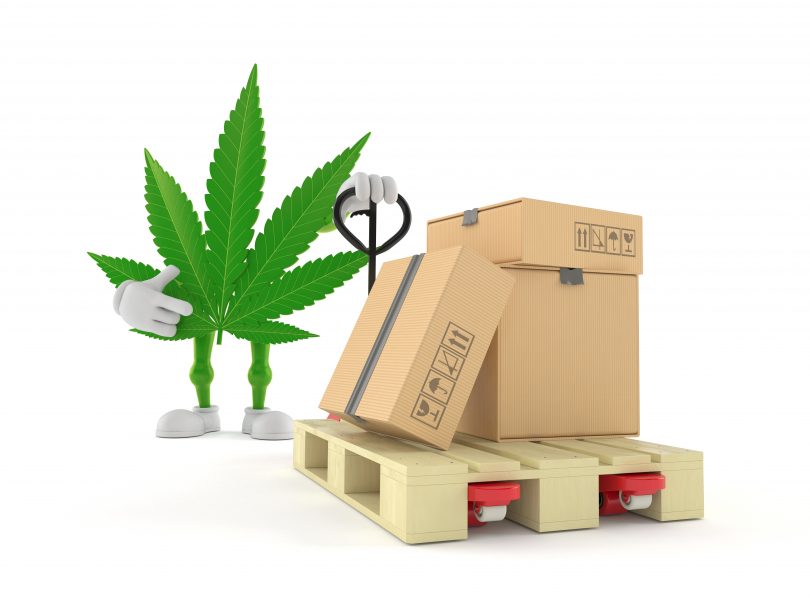As the global cannabis industry expands, different markets are emerging around the world as the biggest contenders in the overall global market. When it comes to Europe, Germany reigns supreme, with a quickly growing, and quickly evolving, medical cannabis industry. Since opening up its list of import countries, this market has grown even further. Here’s a look at the specifics of Germany’s cannabis import market today.
The cannabis products market is a very interesting place these days, with all new additions like delta-8 THC. This alternate form of THC from delta-9, provides users with slightly less psychoactive effect, and does so without the anxiety, couch-locking, and cloudy head generally associated with standard weed. We’ve got a great array of delta-8 THC deals, along with tons of the other new compounds to come out, like THCA, CBDA, and CBN. Take a look and have at it!
Important points about cannabis and Germany so far
First and foremost, cannabis is illegal in Germany for recreational use. Possession of the plant can garner up to five years in prison. When it comes to use, ‘small amounts’ have been somewhat decriminalized, though the term ‘small amount’ is actually not specific, and can vary between provinces, ranging from about 6-15 grams. Strangely enough, there’s no specific mention of cannabis use in the German Federal Narcotics Act, which regulates cannabis in the country. So as long as a first-time offender is caught with just a ‘small amount’, there is generally no criminal punishment for use, though this does not necessarily extend to a further offense.
Sale, supply, and cultivation are all illegal in Germany. Such crimes can be met with prison sentences of up to 15 years, depending on extenuating circumstances, though they can start as low as one year. Extenuating circumstances can include things like children being around, or sold to; the amount in question; and if weapons were involved; among other factors.
Germany does have a comprehensive medical cannabis program for its residents which started in 2017. This expanded on a previous legalization from 1998 when Dronabinol was first legalized, and opened up an allowance for more disorders, also creating a regulated market. In 2019, this was expanded on further with the institution of an import/export market. Germany’s cannabis import and export markets are some of the largest in the world at the moment, and this without a recreational legalization.

In terms of how many patients are being treated with medical cannabis in Germany, there has been no exact number released. In an answer to questions from political party Die Linke (the Left) to officials in parliament, on March 4th, 2020, BfArM – The Federal Institute for Drugs and Medical Devices, which regulates the cannabis industry in Germany, stated that survey results by the agency showed 13,343 complete records. What does this mean? The market intelligence firm that wrote about it, Prohibition Partners, estimated that about 128,000 residents currently receive medical marijuana yearly in Germany.
Back in 2019, Germany was already making its place at the top of the European cannabis world, as the top importer and exporter of cannabis oils for that year. It was actually 2nd in the entire world of oil imports, with $240 million worth imported, and 4th in the world for exports, with $230 million worth of oil exported. At that time, Germany would have only been importing from a couple different countries. As a basis for comparison, in the import category, the US was 1st in the world, importing $893 million worth. And in the export category, China ruled the roost, exporting just under $1 billion worth of cannabis oil.
So how big is Germany’s cannabis import market?
Germany’s medical cannabis import market has been growing by leaps and bounds, with a large part of it due to opening up for imports from more countries. Prior to Germany updating regulation in 2019, all the cannabis used for medical purposes in the country was imported, and from mainly only the Netherlands and Canada. Since 2019 this has been changing, with new numbers showing just how much Germany is importing, and how much from each country.
In the last quarter of 2020, Germany imported 3,264 kg of cannabis flower into the country. Not only did this mark the highest quarter for imports at that time, but it brought the import total for the year up to 9,249 kg. Germany has had 100% year-over-year increases in imports between 2018-2020. The cannabis imported today is now coming from at least 17 different countries, including Portugal, Spain, Uruguay, Israel, and Australia, just to name a few (although a full list of import countries has not yet been released.)
What was released, however, was a response by the federal government to a question posed by Dr. Schinnenburg, a former member of parliament, along with the Free Democratic Party of Germany, which he represented. The response was in reference to 2021 cannabis import quantities into Germany and the countries of export. According to this response, Germany’s cannabis import market saw an 80% increase in just the first half of 2021 in comparison to the same time frame the year before.
Germany imported 8,966 kg of cannabis flowers in the first two quarters of 2021. The first two quarters of 2020 saw imports of about 4,946.3 kg. These numbers relate to cannabis flower to be sold or used as flower, whether for customers or scientific research. In terms of cannabis flowers imported for extract production, Germany imported approximately 980.4 kg in the first two quarters of 2021, whereas the year before it was about 820.3 kg imported for this purpose during the same period. This is a 19.5% increase in the flowers imported for extract production.

Who contributes what, to Germany’s cannabis import market?
So now we know Germany’s got a pretty big cannabis import market, but where is this weed coming from? And which are the leading countries in getting Germany’s business? The information from the government was published here by cannabiswirtschaft, and then reinterpreted a bit more clearly, here by Vice President of Investment Analysis, Alfredo Pascual, of Seed Innovations Ltd.
According to the breakdown, the two biggest exporters into Germany’s cannabis import market, are still the Netherlands and Canada, which were responsible for 22% and 32% of Germany’s imports respectively. Denmark showed itself to be a major contender, however, contributing 19% to Germany’s imports, and Portugal wasn’t far behind either, exporting out 13% to Germany.
Other countries showed lower levels, but have still been getting in on the game. Australia contributed about 5%, Uruguay about 4%, Spain exported out about 2% of what Germany imported, and Austria also provided about 2%. Another 1% came from the combination of several other countries, including Poland, Malta, Lesotho, and Israel.
In terms of what amounts these percentages relate to, here is a list of what the top exporting countries contributed to Germany’s cannabis import market in the first half of 2021. These numbers reflect both flowers imported for sale and use as flowers, and flowers imported for use to make extracts.
- Canada – 2,998.8 kg
- Netherlands – 1,989.4 kg
- Denmark – 1,732.4 kg
- Portugal – 1,583.1 kg
- Australia – 746.2 kg
- Uruguay – 358.2 kg
What’s next for Germany’s cannabis import market?
Germany is interesting because it’s a country with an already huge medical cannabis industry, which is also in the middle of undergoing some pretty intense political changes. In the 2021 Bundestag elections last month, the incumbent party and former leader of the last coalition government, the Christian Democratic Union (CDU/CSU), lost seats. This time around it came in second to the Social Democratic Party (SDP), 25.9% to 24.1%. This means the SDP won 206 seats, and the CDU/CSU only 196.

Not only that, but there was an overall strong showing of left leaning parties, with the Green party taking 118 seats, the Free Democratic Party taking 96, and the Left party winning 39. This means that whatever coalition government is built, is likely to made up of at least some parties that are for cannabis legalization. As such, as Germany puts together its new government, its ability to expand its current medical cannabis industry, into an even bigger recreational one, has become a very viable possibility.
It should be remembered that the CDU has been the top party since 2005, forming coalition governments over the years with different parties, but mainly with the SDP. These partnerships affect voting, which means, when Germany shot down a recreational cannabis bill last year, it wasn’t because there weren’t technically enough parliament members who supported it, but more because the SDP voted against it along with the CDU as part of its coalition partnership, even though the SDP generally supports legalization. Without that voting partnership, a future vote of the same nature, could turn out very differently.
Conclusion
Germany has certainly become one of the main countries of interest when it comes to the world of weed. Not only are Germany’s cannabis import and export markets some of the biggest in the world, but with new elections and a new government forming, it could be the first country in Europe to legalize as well.
Hello to all! You’ve made it to CBDtesters.co, your premiere online location for the most current and thought-provoking cannabis and psychedelics-related news globally. Stop by for a visit regularly to stay aware of the ever-changing world of legal drugs and industrial hemp, and make sure to sign up for our newsletter, so you always get the story first.
for exclusive deals on delta-8 THC, delta-9 THC, THCV, THCP, delta 10, HHC, THC-O and other legal THC products, make sure to subscribe to The Delta 8 Weekly Newsletter, your top-source for all things cannabis-related.
Disclaimer: Hi, I’m a researcher and writer. I’m not a doctor, lawyer, or businessperson. All information in my articles is sourced and referenced, and all opinions stated are mine. I am not giving anyone advise, and though I am more than happy to discuss topics, should someone have a further question or concern, they should seek guidance from a relevant professional.









